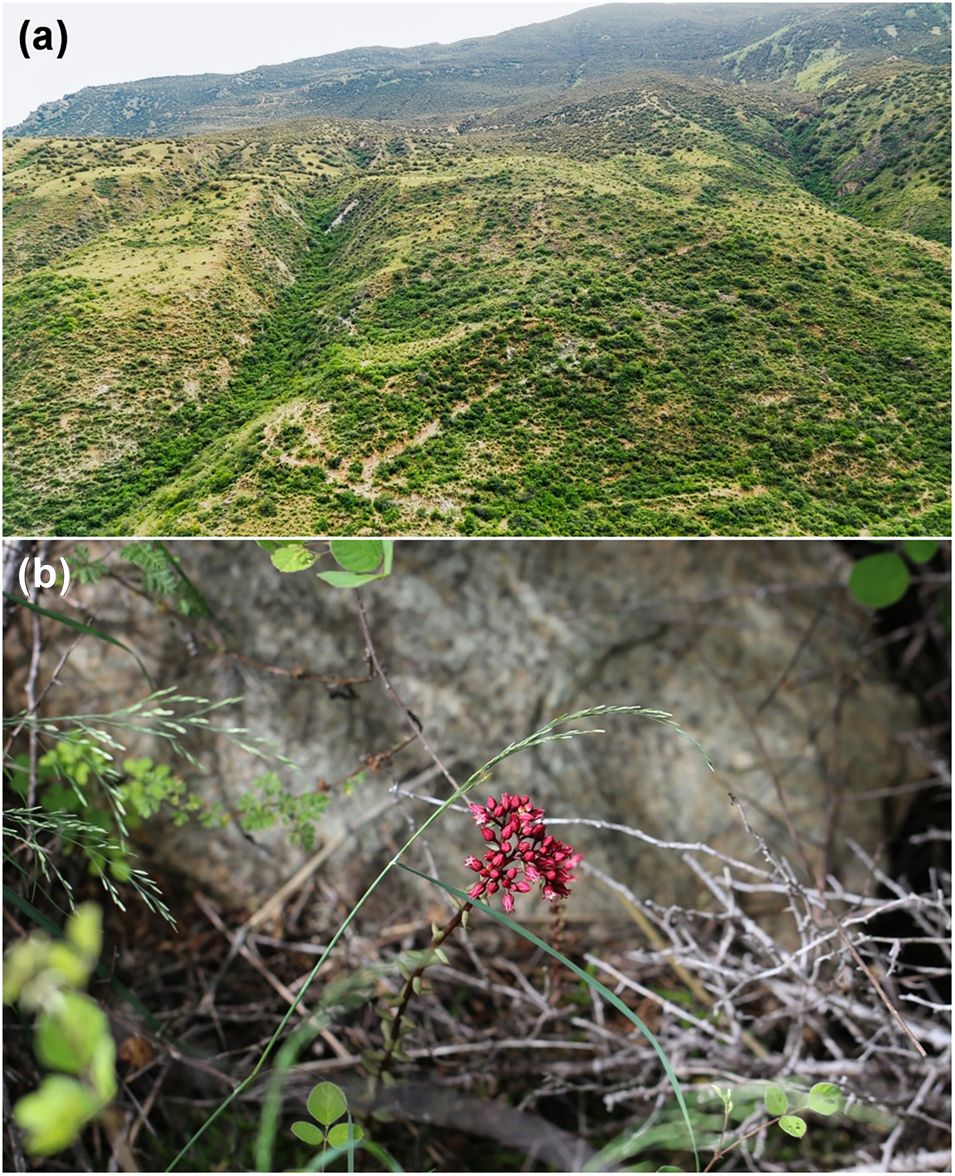Dry-hot valleys of the tropical regions are considered special ecosystems in which woody and herbaceous plants coexist, strongly influenced by seasonal drought, climate and ecological characteristics. The ancient, primary vegetation of the dry-hot valleys of the Jinsha River basin in south-west China is predominantly herbaceous, with scattered shrubs and trees, resembling a sparse tree savannah. Plants of the genus Sinocrassula (family Crassulaceae) are representative of the region's unique vegetation.
With support from the Sichuan Province Batang County Wild Plant Resources Comprehensive Scientific Investigation Project, we surveyed the valleys of the Jinsha River basin in August 2024. During our surveys we incidentally discovered a brightly coloured Sinocrassula plant, which we later confirmed to be the rare Sinocrassula techinensis.
Sinocrassula techinensis is a perennial herbaceous plant. The whole plant is glabrous, the flowering stem is solitary and erect, the stem leaves are alternate and the inflorescences are corymbiform with red petals. It often grows alone amongst grass on rocky hillsides. It is categorized as Critically Endangered on the China Biodiversity Red List—Higher Plants and the Red List of China Higher Plants. We discovered a single population of c. 15 individuals at 3,229 m altitude, within shrubland composed of Sinocrassula davidii var. chuansiensis.
Historically, S. techinensis has only been recorded in Yunnan and Tibet, with the previous specimens collected by Fang Zhendong and stored at the Missouri Botanical Garden in 2003. Our discovery is the first record of this species in Sichuan and is of importance for studying the flora, biogeography and phylogenetic relationships of the genus Sinocrassula.
Our finding not only enriches knowledge of the biodiversity of Batang County but also demonstrates the suitability of the dry-hot valley environment in the upper reaches of the Jinsha River for the growth and reproduction of S. techinensis. To protect this Critically Endangered plant, the local government plans to expand the survey area and continue long-term monitoring, taking effective measures to ensure the survival and reproduction of the species.
We thank the Natural Science Foundation of China (32001390) for their support.

The rediscovery of Sinocrassula techinensis in Batang County, Sichuan Province: (a) its habitat in the dry-hot valleys of the Jinsha River basin, and (b) a flowering individual observed during our surveys in August 2024. Photos: Gang Gao.


